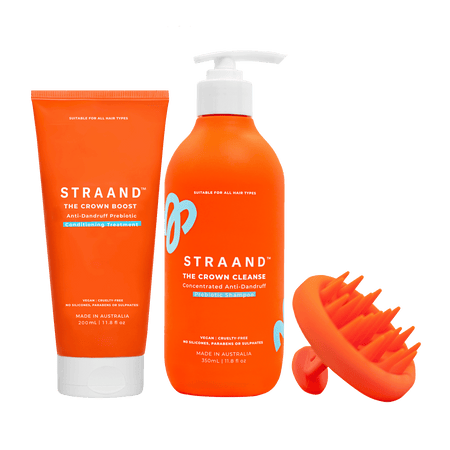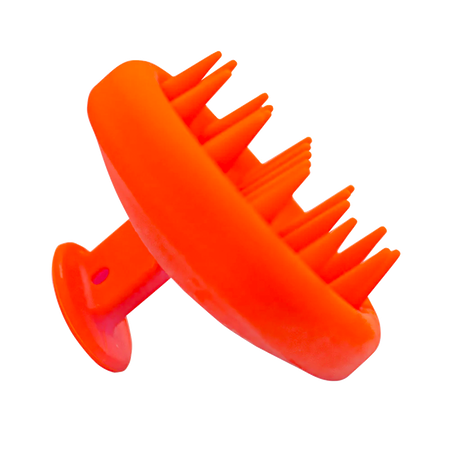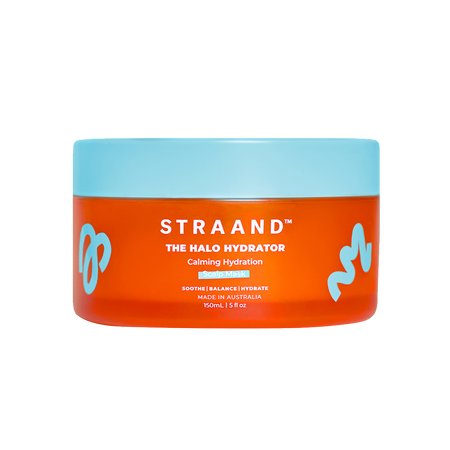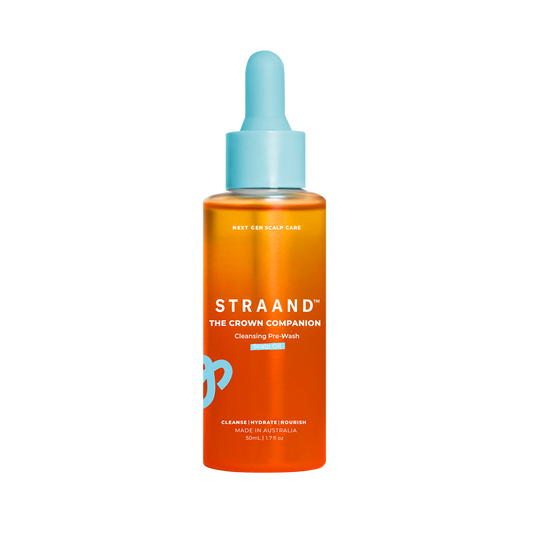We put a lot of time and effort into our skincare routines, but how many of us do the same for our scalps?
More often than not, it’s only when we encounter scalp issues — like the dreaded dandruff — that we seek treatment. However, a preventative approach is always best when it comes to skin and hair care.
A dedicated scalp care routine is essential for maintaining good scalp health long-term. While a daily 30 second scalp massage will help to promote blood flow and hair growth, a formulated scalp treatment is needed to target dryness, flaking, irritation, and oiliness.
So, how can you fit a scalp treatment into your hair care routine, and how often should you do a scalp treatment?
Let’s take a look.
What is a Scalp Treatment?
A scalp treatment is essentially a cleansing mask for your head.
From the hair products we use and the hats we wear to the natural elements we encounter outdoors, our scalps contend with a lot.
While we regularly clear our faces of debris, dead skin cells, oils, and moisture, all too often, our scalps are forgotten.
Scalp treatments are designed to detoxify and rebalance the scalp’s microbiome to keep dandruff, dryness, and itchiness at bay.
Scalp care products appear in a few different forms, including foams, sprays, and oils. Your individual needs will inform which product you choose.
For example, if you have a very dry scalp, you’ll be opting for a treatment with a deeply hydrating and conditioning base. For oily or acne-prone scalps, on the other hand, cleansing products will be most effective.
Most treatments can be applied on either wet or dry hair, and are made to be left in the hair rather than rinsed out. Top tip — we recommend applying a scalp treatment before you hop into bed so that your scalp can soak in all that goodness while you get your z’s in!
Everyone can benefit from a scalp treatment, so even if you’re not struggling with a scalp-related issue, they definitely have a place in your hair care routine.
However, scalp treatments are particularly important for people dealing with scalp conditions, including
- Flaky scalp
- Dandruff
- Dry hair
- Hair breakage
- Damaged scalp
- Oily scalp
- Itchy scalp
Are Scalp Treatments Good for Your Hair?
Yes, scalp treatments can work wonders for your hair!
Scalp treatments can treat dry, oily, flaky, and damaged scalps, restoring them to a balanced, cleansed, and healthy state.
Scalp health promotes hair health, so once you’ve got your scalp under control, you’ll likely notice your strands look and feel cleaner, shinier, and silkier.
Remember, your hair starts at the follicle, which is in your scalp!
Below, we explore some of the key ways in which scalp treatments can benefit your scalp and your locks.
1. They Regulate Oil Secretion
The skin’s oil levels can quite easily tip out of balance.
Sebum is the natural oil that is secreted from the sebaceous gland in the hair follicle. Too much sebum on the scalp can lead to dandruff, while too little can cause dryness and itching.
Sebum secretion needs to be regulated to keep your scalp healthy. Routine scalp treatments can help to regulate your scalp’s secretion of sebum, leaving your hair smooth and clean, and your scalp balanced.
Not too oily, not too dry — just right!
2. They Reduce Dandruff
Not only can scalp treatments reduce dandruff by rebalancing our sebum levels, but they can also help to keep dandruff away by infusing the scalp with essential nutrients.
Nutrient-dense and vitamin-rich scalp treatments help to balance the scalp’s microbiome and fight against dandruff.
3. They Unclog Hair Follicles
A variety of external substances can clog our hair follicles (more on this below), though our follicles are most commonly blocked by sebum.
The natural oils from our scalp, combined with dirt and debris, build up in the hair follicle. Scalp treatments help to rid the follicles of this buildup so that our hair looks cleaner and smells fresher.
4. They Slow the Scalp’s Ageing Process
Just like the skin on our faces and the rest of our bodies, our scalps age.
Over time, our scalps become increasingly vulnerable to hair loss and thinning. Regularly stimulating the scalp can go a long way in slowing this ageing process.
When you massage a scalp treatment into the scalp, you stimulate blood circulation. This helps to strengthen the hair roots and rejuvenate the scalp, which prevents the hair from becoming brittle and shedding.
5. They Prevent Product Build-Up
If you use a lot of products on your hair — think gels, waxes, oils, hair sprays, and dry shampoo — but don’t wash these products out daily, they can begin to gather on the scalp.
This product build-up can give the hair a dull, weighty look and feel.
Investing in a good scalp treatment will rid your head of this build-up and result in smoother, fresher, and shinier hair.
6. They are Relaxing
Let’s face it — the scalp massage is easily the best part of a hairdresser or barber visit.
A good scalp massage is a luxurious (and cheap!) self-care practice you can incorporate into your daily skincare and haircare routine.
When you apply your scalp treatment, give your scalp some love by working the product into the scalp in slow, circular motions. You might even want to use an Exfoliating Scalp Brush for a little extra indulgence.
Pure bliss!

How Often Should You Do a Scalp Treatment?
If you’re using a scalp treatment to maintain a healthy scalp, you’ll only need to pop on a scalp treatment once or twice a month.
Alternatively, if you’re dealing with a scalp condition or severe oiliness or dryness, do your scalp treatment once a week for best results. Once your condition has settled, you can push your treatments out to once every fortnight.
What is the Best Scalp Treatment?
When it comes to scalp treatments, there are some ingredients we recommend seeking out, and others we recommend avoiding at all costs.
Look to revitalising ingredients, such as nourishing oils. An oil-based treatment, like our Crown Fix Scalp Serum, will help to stimulate the scalp, encourage skin cell turnover, and reduce inflammation.
Lactic acid is also a great ingredient for scalp treatments. It helps to reduce oiliness and bacteria growth, and prevents dead skin cells from building up, making it one of the most important ingredients in our Crown Fix Scalp Serum.
As for what to avoid, steer clear of products that contain drying and irritating ingredients, such as sulphates and synthetic ingredients. Our scalp care products are free from silicones, sulphates, and parabens, and are 100% vegan.
How to Do a Scalp Treatment at Home
So, you’ve picked up your scalp treatment and you’re ready to apply it.
First things first: be sure to read through all of the instructions. Each product’s directions will differ, so take the time to read the instructions first.
In most cases, you’ll be directed to wash your hair as usual, jump out of the shower, and then apply the leave-in scalp treatment.
Here’s how to apply the Crown Fix Scalp Serum.
- Deeply cleanse and wash your hair with a nourishing, balancing shampoo, such as the Crown Cleanse Shampoo. Grab your Scalp Brush and work the shampoo into the roots in gentle circular motions.
- Rinse thoroughly and repeat.
- Then, apply the Crown Fix Scalp Serum directly onto the scalp. Stimulate your roots by massaging the product in with your fingers or your scalp brush.
- No need to rinse, and you’ll be left with no residue. You’re good to go!
- Coconut oil
- Tea tree oil
- Jojoba Oil
- Aloe vera
- Apple Cider Vinegar
- Avocado
Before using any ingredient or DIY mix, particularly ones containing essential oils, do a quick patch test to ensure your skin tolerates the product well.
Essential oils aren’t monitored for purity or potency and should always be diluted with a carrier oil, so take extra care when choosing these products. If you have a sore, very itchy, or damaged scalp, we advise against using a DIY scalp treatment, as this may further irritate and inflame the area. Be sure to see a doctor if you have sores or wounds on the head from itching.Send Some Love to Your Scalp
Your scalp deserves the same TLC as your face. A scalp treatment will help to draw out impurities from the scalp and infuse your strands with the nutrients they need to look and feel their best.
Remember, when deciding how often you should do a scalp treatment, consider your reason for using the treatment. If you’re dealing with dandruff, dryness, or oiliness, use your treatment once a week. If you’re using your treatment for maintenance purposes, once a month will deliver great results. You can explore the full range of scalp care products at Straand.Have a question for us? We’ve got you covered on all things scalp health! Get in touch with us here.
















